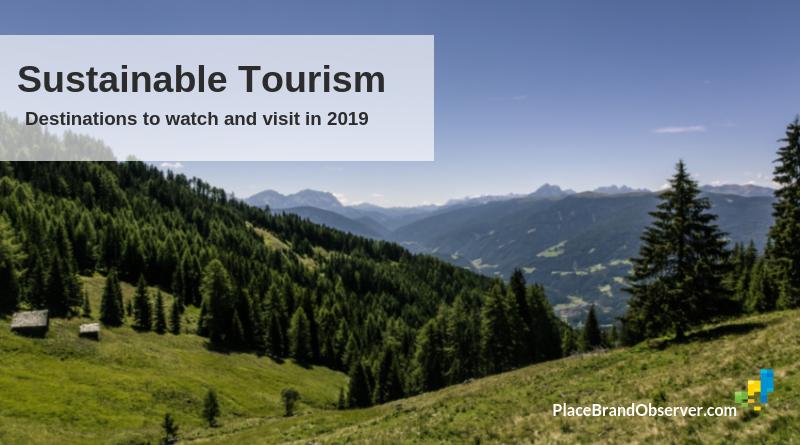Which destinations around the world are leading in sustainability performance and reputation? We asked our destination sustainability expert panel to name the sustainable tourism champions and rising stars to keep an eye on.
Judging by the panel’s answers (in alphabetical order, below), Costa Rica, Slovenia, Botswana parts of Mexico and New Zealand are the destinations best known for their sustainability commitment.
No destination is perfect, of course, and Richard Butler in his answer rightly points out that a “sustainable” destination would have to be one which does not require air travel in particular.
Yet, hoping for ideal scenarios is a luxury as tourism is growing very fast, with more pressure on communities and natural environments than ever before. The destinations mentioned by the panel show us how a more sustainable tourism is possible, and how a focus on sustainability over time can lead to favourable perceptions and a positive reputation.
Hopefully, over time we will be able to visit and tell the stories of most of those destinations.
Which destinations are leading in sustainability?
Albert Salman (Netherlands)
- Slovenia
- Dutch QualityCoast Delta (Schouwen, Goeree, Westvoorne, Veere), The Netherlands
- Vail, Colorado, USA
- Azores, Portugal
- Atlantic QualityCoast of West-Portugal (Oeste, Torres Vedras, Serras do Socorro, Sintra, Cascais)
Anna Alaman (Spain / India)
- Costa Rica
- Huilo Huilo (Chile)
- Bhutan
- Copenhagen
- Amsterdam
Brian Mullis (Guyana)
- St Kitts & Nevis
- Statia
- Chile
- Guyana
- Bonaire
Dagmar Lund-Durlacher (Austria)
- Werfenweng, Lesachtal, Weissensee (Austria)
- Uckermark, Nordseeinsel Juist (Germany)
- Valposciavo/Graubünden (Switzerland)
Fiona Jeffery (United Kingdom)
- New Zealand
- Botswana
- Ljubljana
- Okanagan Territories Canada
Gavin Bate (United Kingdom)
- Antarctica – is protected by a treaty that protects the continent over and above the needs of any visitors.
- Costa Rica – still held up as an example of how an entire country can dedicate itself to preservation and sustainable, happy livelihoods.
- Svalbard – a fragile high arctic environment which is being protected in harmony with cultural heritage and local livelihoods.
- Scottish Highlands – one of the best regions I’ve ever come across for really committing to a holistic approach to sustainability of the wild places, and turning it into its own biggest marker for integrity and reputation.
- Deramokot Reserve, Borneo – a small beautiful forest reserve in Sabah that is allowing tourism in, but keeping wildlife protection uppermost.
Gianna Moscardo (Australia)
- Magnetic Island (Australia)
- Kangaroo Island (Australia)
- Makgadikgadi Pans (Botswana)
- Uluru (Australia)
- Southland/Fjordlands (New Zealand)
Jonathan Tourtellot (USA)
- Faroe Islands (despite the pilot whale hunt. It’s traditional and they’re not endangered)
- Jackson Hole region, Wyoming, USA
- Namibia (trying)
- Sierra Gorda, Querétaro, Mexico
- Cotswolds, UK
Jonathon Day (USA)
I have the greatest admiration for destinations that commit to the hard work of systematic performance management of their sustainability efforts. Earthcheck has been at the cutting edge of developing systems for performance management at a destination level and is GSTC accredited. Destinations that come to mind immediately:
- Kaikoura, New Zealand (Earthcheck Platinum)
- Snaefellsnnes Peninsula (Iceland – Earthcheck Gold)
- Huangshan Mountain, China (Earthcheck Silver)
- Ixtapa (Earthcheck Silver)
- Huatulco Mexico (Earthcheck Platinum)
Julien Buot (France)
- Morocco, particularly the Marrakech Region
- Costa Rica
- Iceland
- Benin
- South Africa
Kelly Bricker (USA)
- Kaikoura, New Zealand
- Rottnest Island, Australia
- Vail, Colorado
- Ixtapa, Guerrero, Mexico
- Snaefellsnes Peninsula, Iceland
Kevin Teng (Singapore)
- Tokyo/Kyoto
- Taiwan
- Napa
- New Zealand
Maja Pak (Slovenia)
Five destinations that have received the Slovenia Green gold certificate this year:
- Ljubljana
- Podčetrtek
- Bled
- Rogaška Slatina
- Komen
Masaru Takayama (Japan)
- Slovenia
- Botswana
- Ecotourism destinations of Australia
- and Costa Rica
- The islands of Ogasawara in Japan, often dubbed ‘Galapagos of the Orient’
Peter Richards (Thailand)
Charming, well-managed, small towns:
- Luang Prabang, Lao PDR
- Hoi An, Vietnam
Philippe Moreau (Portugal)
- Sinal do Vale (Brazil)
- Grootbos Private Nature Reserve (South Africa)
- Comrie Croft (Scotland)
- Basecamp Oulanka (Finland)
- Principe Island in São Tomé & Príncipe, now part of National Geographic Unique Lodges of the World
Rachel Dodds (Canada)
- San Francisco
- New Zealand for the most part
- Centre parc – although more a place
Raj Gyawali (Nepal)
- Tirol (Austria – the adventure bits)
- Bhutan
- Costa Rica (well done marketing as well)
- Ireland (parts of it)
- New Zealand (the adventure bits)
Ronald Sanabria (Costa Rica)
Sustainability is an evolving state not a permanent one. I do not think we can say that a given destination IS sustainable. A destination could be doing great work to sustain itself, could be implementing outstanding sustainability practices, could be delivering good social impacts while protecting the environment, but all have challenges to overcome.
Having said that, some destinations that I know (because I have visited) are working hard to ensure low impact and high social/conservation return are:
- Bonito in Mato Grosso do Sul, Brazil
- Osa Peninsula in the South Pacific part of Costa Rica
- Copenhagen, Denmark
- South Caribbean part of Costa Rica (Puerto Viejo and further south) with very proactive communities committed to conservation
- Sierra Gorda in Queretaro, Mexico
- La Chinantla in Oaxaca, Mexico
- Parts of the Amazon in Ecuador and Peru (with tremendous challenges)
Steve Noakes (Australia)
- Costa Rica
- Namibia
- Norway
- British Columbia
- Lamington National Park, Australia
Wolfgang Strasdas (Germany)
- Island of Juist, Germany
- Bavarian Forest, Germany
- Many rural areas in Switzerland
- Uckermark, Germany
- Namibia’s Communal Conservancies
Get to know our destination sustainability panel here.


